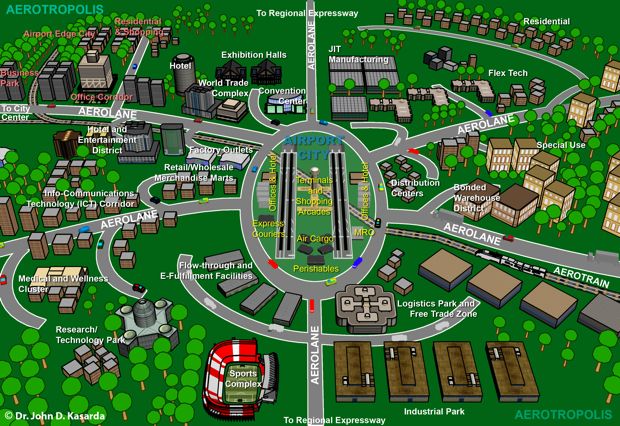Tunnelling toward a city with no more flood woes
A 100-kilometre tunnel linking Ayutthaya and Samut Prakan has been suggested as the latest solution to tackling floods in Bangkok to better direct water and avoid conflicts among residents.
Although the huge tunnel, 10 metres high and 24 metres wide, would cost an enormous 200 billion baht, engineer Suchatchawi Suwannasawat, who suggested the idea, believed the project “suits Bangkok better than other alternatives”.
The super tunnel has won early backing from Bangkok Metropolitan Administration’s deputy governor Teerachon Manomaiphibul, who has urged the government also to get behind the project.
Advocates of the tunnel idea say conventional methods for directing water fail to do the job. Many networks of canals are illegally blocked by houses, which limits their effectiveness. Draining water from land which is densely occupied by communities can also lead to conflicts.
The varying topography of the city, with some areas higher than others, makes it difficult for officials to drain and direct water to the routes they want.
But these problems can be avoided if the tunnel is built and “its construction has nothing to do with the expropriation of vast tracts of land as required by the construction of a floodway”, said Mr Suchatchawi. He chairs the Thailand Underground and Tunnelling Group under the Engineering Institute of Thailand, which will take part in the 2012 World Tunnel Congress in Bangkok between May 18 and 23 next year.
The tunnel would be built near the Bang Pa-in-Samut Prakan outer ring road, extending 100km from Ayutthaya’s Bang Pa-in district to Samut Prakan, which is the exit of the tunnel to the Gulf of Thailand. The tunnel will be divided into two storeys. Its upper half of 5m would be a six-lane road while its lower half would serve as a sewer to drain 130 million cu/m a day of storm water.
But in case Bangkok suffers such a large flood again, Mr Suchatchawi said, the upper half of the tunnel could be turned into a floodway to boost drainage to 260 million cu/m a day.
Bangkok can also earn “added value” as floodwater will be used to produce between 400 and 600 megawatts of electricity with a vertical tunnel called a “Power Generation Shaft” built as part of the project. Construction should take two years if the project is joined by many construction firms building different sections, Mr Suchatchawi said.
“We must have the government implement this tunnel project. The Bangkok Metropolitan Administration alone can’t do it. It needs a huge investment,” said deputy BMA governor Teerachon. “But I agree with the project.”
City Hall has built its own giant tunnel linking Rama IX and Ramkhamhaeng roads. The 5km tunnel, 5m in diameter, which opened in February this year, can drain water at 60 cu/m a second.
The city also plans to build another three tunnels, mostly 5m in diameter, as part of its flood prevention measures.
The Ratchada-Suthisan tunnel, construction of which began in the middle of this year, will run 6km from Ratchada-Sutthisan intersection to the Chao Phraya River. Others are the 13.5km Don Muang tunnel which will help drain water in Dong Muang, Chatuchak, Bang Khen districts and parts of the Sai Mai area and the 9.5km Suan Luang Ro 9 tunnel whose drainage will cover 85 square kilometres, including Phra Khanong.
Thailand is not the only country that is troubled by floods, Mr Suchatchawi said. Others countries face the same problem, but they have tunnels to drain water.
The US has a 174km tunnel in Chicago, and Japan a 64km tunnel to drain stormwater.
Kuala Lumpur has also approved a new 9.7km tunnel divided into levels – a motorway on the upper stretch and a sewer on the other.
Mr Suchatchawi said he was especially upset comparing Bangkok’s tunnels with Singapore’s 300km tunnel network.
For image of tunnel proposal go to http://www.bangkokpost.com/news/local/269038/tunnelling-toward-a-city-with-no-more-flood-woes
——————————————————————————–
International body goes underground
The World Tunnel Congress is an international conference supported by the International Tunnelling and Underground Space Association.
Civil and mining engineers meet at the conference each year to present and exchange views on technologies and projects relating to underground constructions.
Thailand is among the association’s 280 members, which include individuals, organisations, companies and 58 entire countries.
Bangkok will host the World Tunnel Congress on May 18-23, after Canada and Finland held the meeting in 2010 and 2011, respectively.
Source: http://www.bangkokpost.com/news/local/269038/tunnelling-toward-a-city-with-no-more-flood-woes

